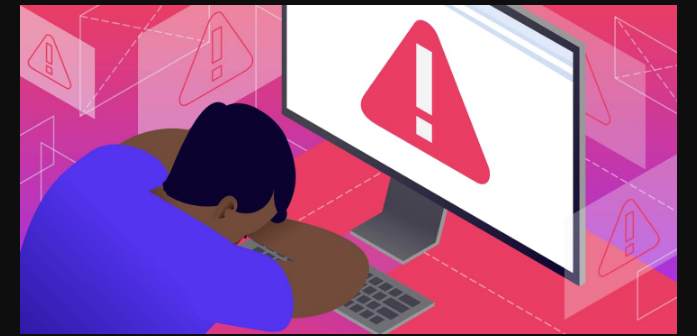How to Fix an Overloaded Website – An overloaded website refers to a situation where a website’s server or infrastructure is experiencing excessive traffic or resource demands that surpass its capacity to handle them effectively.
When a website becomes overloaded, it can lead to performance issues, slow loading times, and even complete unavailability. There are several factors that can contribute to a website becoming overloaded.
Sudden Spike in Traffic, if a website experiences a sudden surge in traffic, such as during a viral event or major marketing campaign, the server may struggle to handle the increased load.
Insufficient Server Resources, if the server hosting the website does not have enough processing power, memory, or bandwidth to handle the incoming requests, it can become overwhelmed.
Overloaded Website
Inefficient Coding or Configuration, poorly optimized code, excessive database queries, or inefficient server configurations can put excessive strain on the server, leading to performance issues.
Distributed Denial of Service (DDoS) Attacks, in some cases, a website may be deliberately targeted by a DDoS attack, where a large number of requests are sent to the website simultaneously, overwhelming the server.

The consequences of an overloaded website can include slow page load times, unresponsive website features, and potential loss of revenue or customers.
It is essential for website owners to monitor their website’s performance and scalability to ensure it can handle the expected traffic and demands.
Current Server Tips
To mitigate the risk of an overloaded website, website owners can consider implementing various strategies, such as:
Scaling the Infrastructure
Upgrading server resources, such as CPU, memory, and bandwidth, to handle increased traffic and demand.
Load Balancing
Distributing incoming traffic across multiple servers to balance the load and prevent overload on a single server.
Content Delivery Network (CDN)
Using a CDN to cache and deliver website content from geographically distributed servers, reducing the load on the origin server.
Code Optimization
Ensuring that website code, including scripts, plugins, and database queries, is optimized for efficiency and minimal resource usage.
Traffic Monitoring and Analysis
Regularly monitoring website traffic and performance metrics to identify potential bottlenecks or spikes in traffic.
By implementing these measures, website owners can help ensure that their website remains accessible, performs well, and can handle increased traffic without becoming overloaded.
Tutorial on Fixing Overloaded Sites
Fixing an overloaded website requires identifying the root causes of the overload and implementing appropriate solutions to address them. Here are some steps to help resolve an overloaded website:
Identify the Source of Overload
Determine the specific factors causing the overload. This may involve analyzing server logs, monitoring system resource usage, or investigating recent changes or events that coincide with the overload.
Optimize Website Code and Configuration
Review the website’s code, plugins, and configurations to identify any inefficiencies or performance bottlenecks. Optimize the code, reduce the number of unnecessary plugins, and ensure proper caching and minification techniques are implemented.
Upgrade Server Resources
If the website consistently experiences high traffic or resource demands, consider upgrading the server resources, such as CPU, memory, and bandwidth. This can involve upgrading to a more powerful hosting plan or migrating to a dedicated server or cloud-based infrastructure.
Implement Caching
Utilize caching mechanisms, such as browser caching and server-side caching, to store frequently accessed content and reduce the server load. This helps deliver content faster and reduces the strain on the server.
Load Balancing
Implement load balancing techniques by distributing incoming traffic across multiple servers. This ensures that the workload is evenly distributed and prevents a single server from becoming overwhelmed.
Content Delivery Network (CDN)
Use a CDN to offload the delivery of static content, such as images, CSS, and JavaScript files, to geographically distributed servers. This reduces the load on the origin server and improves website performance.
DDoS Protection
Deploy appropriate security measures, such as DDoS protection services or firewalls, to mitigate the impact of distributed denial of service (DDoS) attacks that can overload a website.
Monitor and Scale
Regularly monitor website performance and traffic patterns to proactively identify potential overload issues. Scale the infrastructure as needed, based on traffic trends and resource utilization.
Optimize Database
Optimize the database by removing unnecessary data, optimizing queries, and using database caching techniques to reduce the load on the database server.
Content Optimization
Optimize website content, such as images and media files, by compressing them without compromising quality. This helps reduce page load times and bandwidth usage.
It’s important to note that the specific solutions for fixing an overloaded website may vary depending on the underlying causes and the website’s architecture. It’s recommended to consult with web developers, system administrators, or hosting providers to implement the most suitable fixes for your specific situation.









